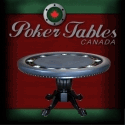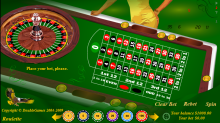If one understands the basics of probability theory, then in roulette especially it is very easy to test betting systems mathematically. Here is the step by step logic of applying probability in roulette to the possible outcomes.
First, all the mathematics used here is based on a European single 0 wheel since the house edge is half the American version.
We know that the probability of an event happening is the chances of that event compared to all the possible events. For instance, when you flip a coin there are 2 possible outcomes: heads, tails. If you want to know what is the probability that the coin will come up heads, then that would be: heads / (heads + tails) = 1/2 = .5. Likewise when playing an even money bet at roulette, that option covers 18 of the 37 possible outcomes: 18/37=.48648649.
To find out the effect the odds have on a measurable outcome, we can apply that outcome to all possible results. So if we’re playing $1 on black, then we know that for 18 of 37 outcomes we will net $1 profit, and for 19 of the 37 possible outcomes we will net a $1 loss. ((18/37)*1)+((19/37)*-1)=-.02702703. This shows the house advantage on any single spin applied to your bankroll. We know that if you place $1 on any even number bet on average you will loose almost three cents per spin or $27 over 100 spins.
This is valuable when looking at more complicated betting within the layout of the table. For instance, if you consider on the thirds position that the return is 2:1. Let’s look at the extremes. If you place a bet on one of the three options, then you are obviously playing against probability: 12/37=.32432432 probability to win. If you place $1 on all three of the possible options, then for 36 of 37 numbers you will loose $2, make $2, and have the bet on the winning third returned to you for a net profit of $0. This of course makes no sense at all, but you’ll win almost every time if you’re in it to feel like a winner however if your considering a system you’re trying to make money. If we hedge the single bet with the second possible bet and place $1 on the first two of the thirds, then we cover 24 of 37 numbers 24/37=.64864865. We’re guaranteed to loose one bet, but if the other hits then we make $2, minus the one lost, plus the winning bet returned makes a net profit of $1 – and here’s the kicker – our chance of winning on any single bet is greater than 50% (64.86% to be precise).
We know that roulette is an independently random game where the results of one action does not affect the odds of a second action, so presented like this one might see this a winning system of finding a way to shift the odds in your favor. However if we analyze all the possible outcomes we see that the proposition is a loosing one. 24 of 37 possible outcomes net us $1. On 13 of 37 possible outcomes we loose $2. So we plug in our formula: ((24/37)*1)+((13/37)*-2)=-.05405405. This is even worse than playing even money odds.
Now we come full circle. Almost all systems are based on the premise that the likelihood of an event happening repeatedly gets exponentially smaller the more times in a row one seeks that option. Probability will never rule out a roulette table showing the number 36 100 times in a row, but it will tell us exactly how unlikely it is. The premise is that the probability of an event happening once is multiplied by the likelihood of the second event multiplied by the third event and so on. For instance, for a single number to come up 100 times we multiply (1/37)*(1/37)*(1/37)… for one hundred times. This is a tiny number but we can see how fast it adds up:
(1/37)=.02702703
(1/37)*(1/37)=.00073046
(1/37)*(1/37)*(1/37)=.00001974
(1/37)*(1/37)*(1/37)*(1/37)=.00000053
The likelihood of a number coming up four times in a row is only 0.000053%, but it happens. Just go to Global Player Casino and check out the roulette results for the year. But I digress, the strategies say if you chase a loss long enough it won’t loose any more, and systems like the Martingale set it up so that you realize a profit when that condition fails. However, it’s still a loosing system because we can plug in our formula to this just as easily as we can plug it into a single event.
But first let’s examine what it is we’re looking at. If we’re analyzing a system there are only two options we’re interested in: win or loss. Let’s not get too complicated and assume that one loss will exit the system and return the player to the starting state such as the Martingale.
If the first spin looses then we go to a second spin, and if the second spin looses then we go to the third and so on. So we know that for however many levels we examine all the preceding spins will be losses. In other words, if 51.4% of spins will loose, then we are looking at 51.4% of 51.4% will loose twice in a row and 48.6% of 51.4% will win on the second round. Therefore, 51.4% of 51.4% of 51.4% will loose thrice, and 48.6% of 51.4% of 51.4% will win.
For a single level we know that the formula is the probability of a win times the net result and the probability of a loss times the net result.
(((18/37)*1)+((19/37)*-1))= -.02702703
To check the second level, the probability of a loss followed by the probability of a win times the net result is compared to two losses and the net result.
(((19/37)*(18/37))*1)+(((19/37)^2)*-2)= -.27757487
To extrapolate the third, fourth, and fifth level:
((((19/37)^2)*(18/37))*1)+(((19/37)^3)*-4)= -.4133615
((((19/37)^3)*(18/37))*1)+(((19/37)^4)*-8)= -.49040931
We can see no matter how far we go on the Martingale system it’s always more likely a loosing proposition than a wining proposition, and the deeper one goes the more likely one is to loose a greater sum of money. Of course this isn’t a surprise since the odds are already against us.



